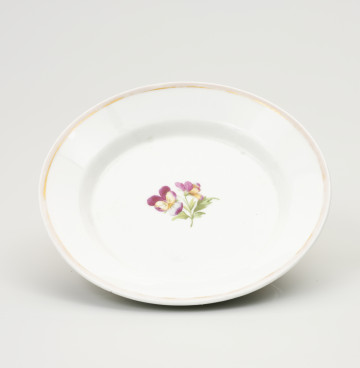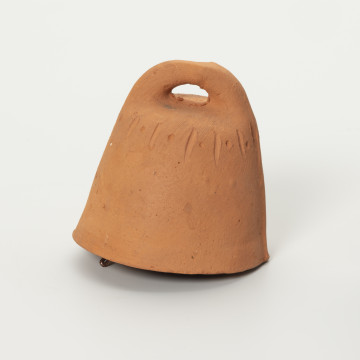
Plate
1913 — 1930
National Museum in Szczecin
Part of the collection: Souvenirs of Szczecin pioneers
The history of Western Pomerania is foremost the history of a region in which the fates of different nations and cultures have intertwined over the centuries. The Polish people became tied to this place for good in 1945. As a result of the events of the Second World War and the political decision for an unprecedented total population exchange, the history of this region was largely moulded by the fate of the newly arrived settlers. Some came here because they had been resettled from their home villages in the Kresy (Eastern Borderlands), while others were returning from forced labour in Germany. Regardless of their motives, the newcomers undertook the hardship of adapting to alien, and extremely difficult conditions. Among the first settlers was Helena Kurcyusz (1914-1999), a Polish architect, town planner, painter and cultural promoter. Deciding to stay in Szczecin, she moved into a villa at ul. Stanisława Wyspiańskiego 7, taking over the furniture, appliances and tableware left there by the exiled residents, including a porcelain vase made by the Rosenthal porcelain factory, the products of which are still extremely popular around the world and are at the same time the epitome of luxury and elegance. The artefact, alongside other personal effects, was donated to the collection of the National Museum in Szczecin after the death of Helena Kurcyuszowa in 1999. Anna Lew-Machniak
Author / creator
Object type
vase, adornment, haus furnishing
Technique
forming, wypalanie, gold over glaze
Material
porcelain
Origin / acquisition method
donation
Creation time / dating
Creation / finding place
Owner
Muzeum Narodowe w Szczecinie
Identification number
Location / status

1913 — 1930
National Museum in Szczecin

1930 — 1945
National Museum in Szczecin

1951 — 1999
National Museum in Szczecin
DISCOVER this TOPIC
National Museum in Lublin
DISCOVER this PATH
Educational path